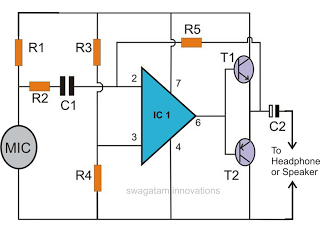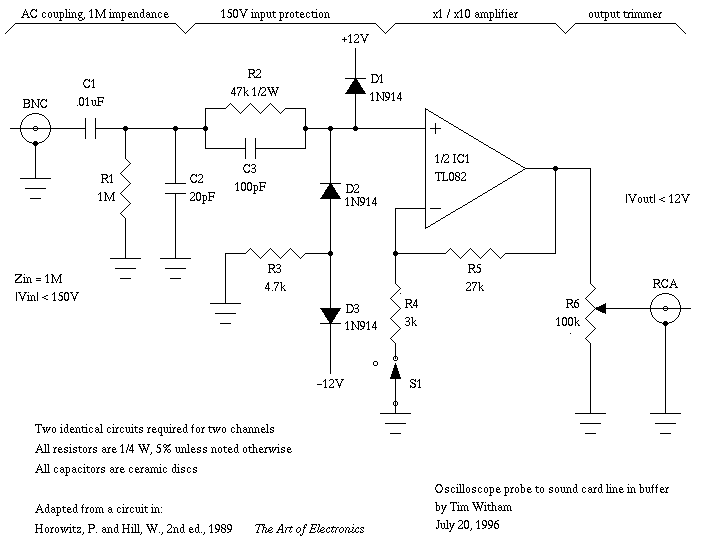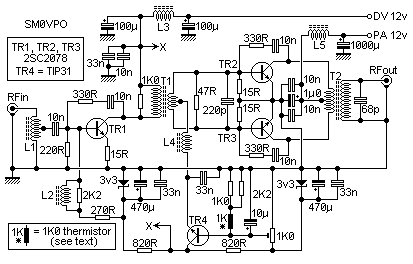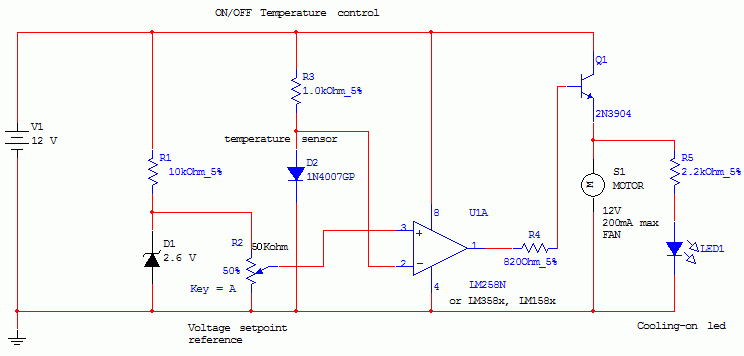
Thermocouple Amplifier circuit (CA3193)

The circuit requires a 15-volt power supply and employs a precision operational amplifier, CA3193 BiMOS, to amplify the generated signal by more than 500 times. Three 22-megohm resistors are utilized to ensure a large-scale output in the event of a thermocouple disconnection.
This thermocouple amplifier is designed to be versatile, making it suitable for a wide range of applications. The CA3193 BiMOS op-amp is selected for its high precision, low offset voltage, and low noise characteristics, which are essential for accurate signal amplification in thermocouple applications.
The circuit configuration leverages the characteristics of the op-amp to achieve a high gain, which is crucial for detecting small voltage changes from the thermocouple. The use of three 22-megohm resistors in the feedback path ensures that the output remains stable and provides a significant output voltage even when the thermocouple is disconnected. This feature is particularly important for maintaining circuit integrity and providing an indication of thermocouple failure.
Additionally, the design may include bypass capacitors near the power supply pins of the op-amp to filter out any high-frequency noise, ensuring that the amplified signal remains clean. The circuit can be implemented on a PCB, with careful attention to layout to minimize noise and interference, particularly in environments with high electromagnetic interference.
Overall, this thermocouple amplifier circuit is an effective solution for applications requiring precise temperature measurements and can be adapted for various industrial and laboratory settings.The circuit needs 15 volts and uses a precision op amp CA3193 BiMOS to amplify the signal generated more than 500 times. Three 22-megohm resistors provide large-scale output if the thermocouple opens. A nice thermocouple amplifier suitable for every apllication.
This thermocouple amplifier is designed to be versatile, making it suitable for a wide range of applications. The CA3193 BiMOS op-amp is selected for its high precision, low offset voltage, and low noise characteristics, which are essential for accurate signal amplification in thermocouple applications.
The circuit configuration leverages the characteristics of the op-amp to achieve a high gain, which is crucial for detecting small voltage changes from the thermocouple. The use of three 22-megohm resistors in the feedback path ensures that the output remains stable and provides a significant output voltage even when the thermocouple is disconnected. This feature is particularly important for maintaining circuit integrity and providing an indication of thermocouple failure.
Additionally, the design may include bypass capacitors near the power supply pins of the op-amp to filter out any high-frequency noise, ensuring that the amplified signal remains clean. The circuit can be implemented on a PCB, with careful attention to layout to minimize noise and interference, particularly in environments with high electromagnetic interference.
Overall, this thermocouple amplifier circuit is an effective solution for applications requiring precise temperature measurements and can be adapted for various industrial and laboratory settings.The circuit needs 15 volts and uses a precision op amp CA3193 BiMOS to amplify the signal generated more than 500 times. Three 22-megohm resistors provide large-scale output if the thermocouple opens. A nice thermocouple amplifier suitable for every apllication.





